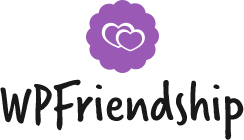Let’s begin by first defining what actually Learning Agility is, according to the definition, the ability and willingness to learn from experiences and then apply the same learning’s to perform successfully in a new given situation is called Learning Agility. Putting it in simpler words learning agility is nothing but a skill that is high in demand and is basically an ability of being in a situation and not knowing what to do in the given situation and then figuring a way out of it. To put in simple words the individuals who learn and learn correctly from their past experiences are considered good at learning agility and the remaining are not.
High learning agility means learning from experiences and being able to put the same learning in a new given situation.

Now one may ask that why is it relevant in the companies? Could this be because the environment in these companies are constantly changing and these companies are always in search of people that are keen to learn and adapt to new situations and thereby solving them. Yes, this is exactly why there is relevance.
Improving the learning agility
Now to explain this lets take an example and say that you have been promoted to a completely new profile and you have no idea as to how you would perform at the new job position. What would a normal person do? Think and make the decisions that feel correct at the moment. For that you need to be a great and swift learner and that is something that you are already programmed to do.
The Basic components(Behavioural) of learning agility is something that can be learned and this is how
Identify the gaps using the learning agility assessments: Not each individual is born to be a great learner rather most of us are slow at it. The situations and the leaning ability vary from person to person, while the important factors of learning agility can be taught to an individual and important part here is to find out the missing ones. For the same reason assessment tools are used. Two most popular tools used are:
a. Assessment tool 1 – This assessment helps you identify the best agile learners in a specific organisation and would be the best options to lead way to success of the company. This assessment measures 4 major agilities namely:
- Mental Agility – This is the ability to handle complex tasks. The aim here is the ability to measure critical thinking, openness to learning, learning in con fusing situations and aiding to effective decision-making.
- People Agility – An important agility is managing people well and communicating effectively with them, even when they are from diverse backgrounds. Further it develops Team building, political savvy, conflict management and management of diversity.
- Change agility – The ability to adapt to changing situations and still be able to perform. This one measures creativity, vision, flexibility and awareness of external environment.
- Result agility – The ability to learn quickly from new experiences and subsequently give great results in the very first situations. It measures ones confidence, the drive for results, problem solving and accountably.
b. Assessment tool 2 – This assessment allows one to have a deeper knowledge and constructing ones learning agility and following this how to apply the same to your organisation.
Mistakes are nothing but learning opportunities
Understanding that mistakes are learning opportunities
There are three dimensions to the learning agility which are gathering the information, seeking feedback and reflecting. Now here one need to understand that in case the employees make mistakes and it is considered as a taboo in the organisation there will be a natural defensiveness with time and so it is important to tactfully work with mistakes. There are very few people who complete the tasks in the very first go and this should be understood by both the employer and employee. Therefore, rather than creating an environment that is rough the organisations should create an environment where the agile learners shine.
One Way of doing this practice is by rewarding an individual when he/she displays an agile learning behaviour. By offering incentives or socially recognising them, employees will learn better from errors.
Creating a Culture of challenging the status Quo
An agile learner is one that is not scared to challenge the status quo and one that would take risks even when their opinion differs from someone else. In case of an argument they would not accept it as said rather they would evaluate the statement, ask a lot of questions and give suggestions and continue this until they are fully satisfied. This behaviour is very difficult to find in a lot of organisations because they are afraid to disturb the office atmosphere, let alone speaking in this manner to your senior.
A way to encourage this in your organisation is by hitting your team together and making them ask questions and asking for suggestions and subsequently rewarding this behaviour. This practice will encourage them to practice this behaviour in future also without any hesitation.
Providing Proper skills to the employees for dealing with uncertainty
A True agile learner is one who has learnt to be comfortable in any sort of uncomfortable situation. They understand the fact if they do not know what needs to be done in a situation. Learn to keep calm and become confident and find a logical approach of solving the situation. The best method organisations can use is by making the employees do things they are not experienced in and throwing challenges that they are unaware of. Enrolling them for training sessions and subsequently offering them courses online that mentor them on how to take risks and be logical in solving a problem. In this way they would be learning the skills needed in situations of uncertainty.
It is extremely important to understand that if the employees don’t adapt-grown and evolve in their jobs they become inconsistent after a while. Learning agility such as these which make them successful in a 21st century work place.
